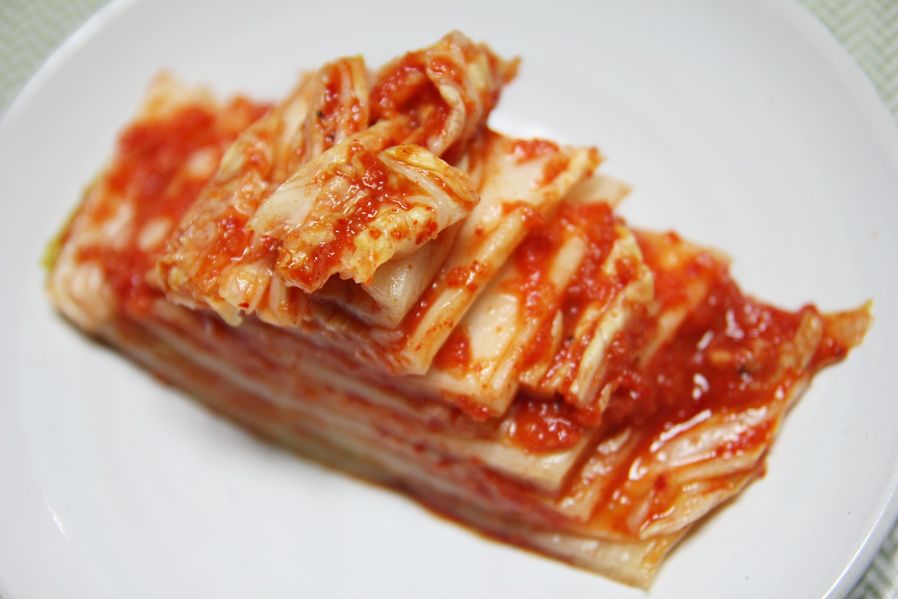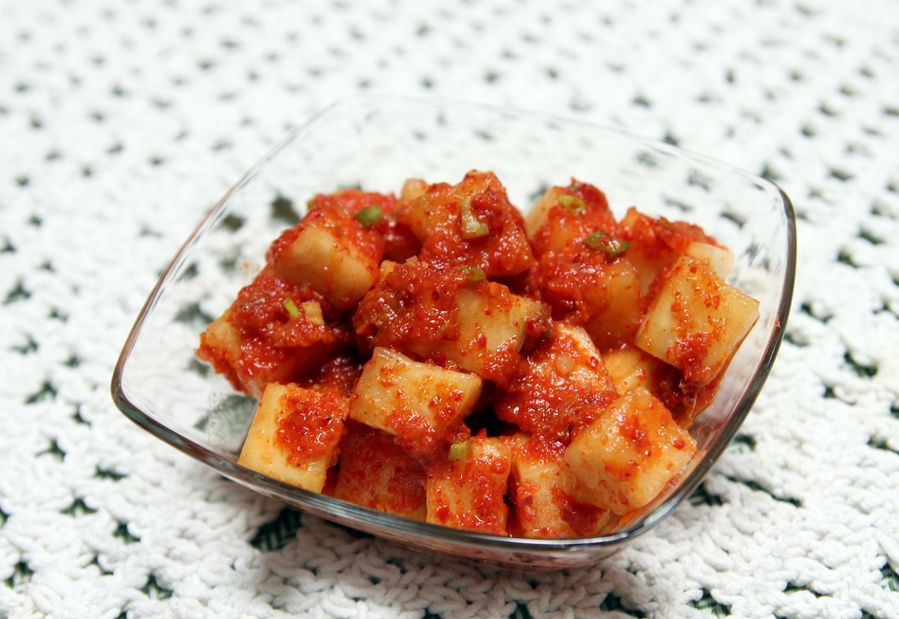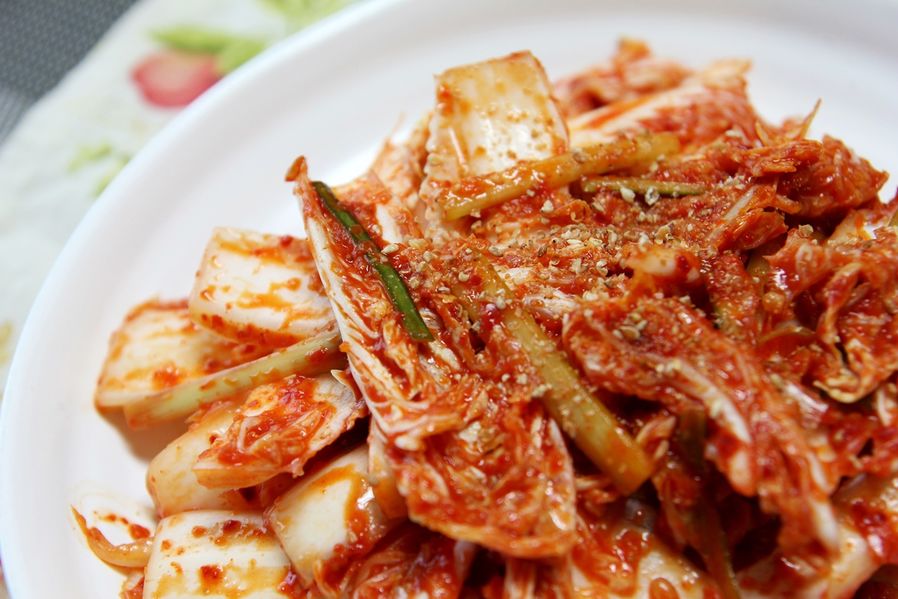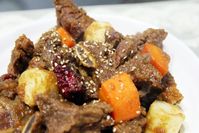1. Ingredients for Kimchi
- Primary ingredients: Cabbages or white radishes
- Secondary ingredients: Basic seasoning (red chili powder, sugar, garlic and Jeotgal) and vegetables (welsh onion and water parsley)
2. Taste evaluation
-Spicy: ★★★★☆
-Salty: ★★★☆☆
-Sweet: ★☆☆☆☆
-Sour: ★★☆☆☆
3. Introduction to Kimchi
Kimchi
is a significant Korean food that you’ll find EVERDAY for EVERY
meal. It’s the most famous Korean food in the world since it was
highly praised by Los Angeles Times as the oriental restorative herb
medicine.
Kimchi was originated 3,000 years ago when people started to eat salted cucumbers. Since then, people started to eat vegetables soaked in brine, which was referred to as Dimchae, and it naturally became Kimchi for convenience.
Kimchi is red for red chili powder is used. While Kimchi has 3,000 years of history, it’s only been 400 years from the 17th century that spicy red chili powder has been used.

Kimchi could be made from cabbage, radish, cucumber, welsh onion or garlic chive. Among them, Baechu(cabbage) Kimchi is the most popular.
To the salted cabbages, you should add red chili powder, sugar, garlic, ginger and salted seafood (Jeotgal) to season. First taste could be strong due to spicy chili pepper and piquant raw garlic.
There’s something about this Kimchi that increases Korean people’s appetite. It’s because of Jeotgal, which is salted fish and sauce fermented, and it is like anchovy sauce in Italy or Nuoc Mam in Vietnam.
Jeotgal stinks as it is fish fermented for a long time but it has special and deep flavor as it is aged.
People eat Kimchi right after they made it but you’ll taste the best Kimchi after keeping it for 4 weeks under refrigeration. This is called Igeun Kimchi (fermented Kimchi).
In old times, there was nothing much to eat in winter for there is nothing to harvest. So just when the winter came, people harvested massive amounts of cabbages and radishes, salted them, marinated them with spicy sauce, and bury them in the ground that keeps constant temperature in order to preserve them until the spring came.
While
they are kept in the ground, Kimchi is fermented producing
lactobacillus that makes the sauce pop like club soda and sour at the
same time. Plus, lactobacillus makes Kimchi a very healthy product.
These days, we do not have to make massive amounts of Kimchi at once due to the invention of the refrigerator. But the tradition has been passed down that people still make Kimchi when the winter begins in Korea because they need a lot of Kimchi in order to make varieties of Kimchi every day.
If you visit Korea in November-December, there are some special events for foreigners to make Kimchi together.
Kimchi
is deeply rooted in Korea’s everyday lifestyle that people say
‘Kimchi’ instead of ‘Cheese’ when taking pictures.
You’ll find a dish of Kimchi in most Korean restaurants in Korea. Try Kimchi then you’ll taste the chili-flavor Korean foods represent.
4. Kinds of Kimchi
Kimchi has numerous, probably hundreds of variations in each region using different vegetables since three thousand years ago.
Kimchi that Korean Korean people usually eat would be Baechu (cabbage) Kimchi, Mu (radish) Kimchi (which is referred to Kkakdugi), Oi (cucumber) Kimchi, and Pa (welsh onion) Kimchi. Other than those, there are Baek Kimchi (white Kimchi) with no red chili powder and Mul Kimchi (watery Kimchi) that you can enjoy cold liquid together with Kimchi.
The most popular ones are Baechu-kimchi and Mu-kimchi. Both of them are similarly made using similar sauce while Mu-kimchi would be more crunchy.

5. How to enjoy Kimchi even more
Kimchi could be too strong at first as it contains spicy red chili powder, sour raw garlic and fishy Jeotgal. Some tourists have gastroenteric troubles after they finish the whole dish before meal because they thought it was salad.
Kimchi alone would be too pungent so I suggest that you should try it with some other light dishes.
It’s best when you eat it with white rice. Then you’ll be able to enjoy the original taste of Kimchi.
Other than that, it will be also tasty if you eat it with dishes with soup such as Kalguksu(chopped noodles) or Seolleongtang (stock soup of bone and stew meat).
At
last, you could spend the most Korean-like night when you drink soju
with Samgyupsal wrapped with Kimchi.











